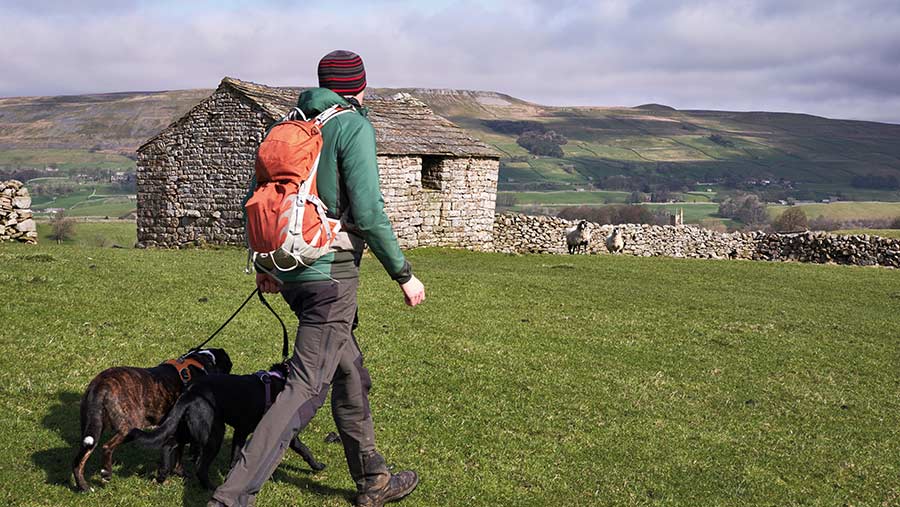Business Clinic: How can I clarify if a right of way exists?
 © Liam Grant Photography/Stocksy
© Liam Grant Photography/Stocksy Whether you have a legal, tax, insurance, management or land issue, Farmers Weekly’s Business Clinic experts can help.
Richie Rees, chartered legal executive (agriculture) at Thrings, advises on right of way rules and trespass issues.
See also: Business Clinic: Is a discretionary trust the right move for our farm and family?
Q: During Christmas and New Year we often see an increase in the number of people using our land for winter walks.
How can I clarify where a right of way exists and what can I legally do if people trespass?
A: People enjoying the countryside may be tempted off the beaten track but not be aware that they are potentially trespassing.
Landowners and farmers should also know their rights and responsibilities when it comes to public rights of way and be aware of how they can respond if trespassers become a nuisance.
If you are unsure whether you have public rights of way over your land you can check the legal record – the “definitive map”.
This is a legal document that must be held and kept up to date by every county council or unitary authority in England and Wales.
It shows every right of way in the area and is usually accompanied by a document called the definitive statement, which records extra information such as limitations on the public’s use of stiles and gates.
These documents are free to view at council offices and are sometimes available online.
Responsibilities for rights of way on your land
If you own or occupy land crossed by a public right of way, it is your responsibility to keep the route clear and safe for users.
This means you must keep paths clear, safe and free from hazards, including overgrowing vegetation.
Obstructions such as fences, locked gates or parked machinery are a statutory offence, and it is the responsibility of the landowner to clear trees or branches that have fallen on or across a right of way.
Attempts to deter walkers, for example by using barbed wire on fences or styles, are illegal, as is the installation of new gates and styles without the permission of the relevant authority.
It is important to clearly signpost rights of way to encourage walkers to stick to the permitted route, otherwise you may find it difficult to argue that any actions you take against trespassers are justified.
If someone is considered to be trespassing, you are entitled to ask them to leave and, if they refuse, you may use “reasonable force” to remove them.
Approach this with caution, as the definition of “reasonable force” is highly subjective and many landowners have been prosecuted for using excessive force.
No matter how persistent a trespasser is, you cannot use threatening behaviour or deliberately put the public at risk, for example by putting up barbed wire in places where members of the public are entitled to gain access.
How a route can become a right of way
A public right of way can be established in a number of ways. The most common is known as “presumed dedication”.
Put simply, the fact that a route has been used by the public without challenge for a significant period of time is used as evidence that the landowner intended to dedicate it as a right of way.
The key phrase here is “a significant period of time”, and what that should be when it comes to presumed dedication. The Highways Act 1980 sets this as 20 years or more.
However, presumed dedication can also take place under common law, and this muddies the waters because there is no set rule in common law about what a “significant period” should be.
Do you have a question for the panel?
Outline your legal, tax, finance, insurance or farm management question in no more than 350 words and Farmers Weekly will put it to a member of the panel. Please give as much information as possible.
Email your question to FW-Businessclinic@markallengroup.com using the subject line “Business Clinic”.
